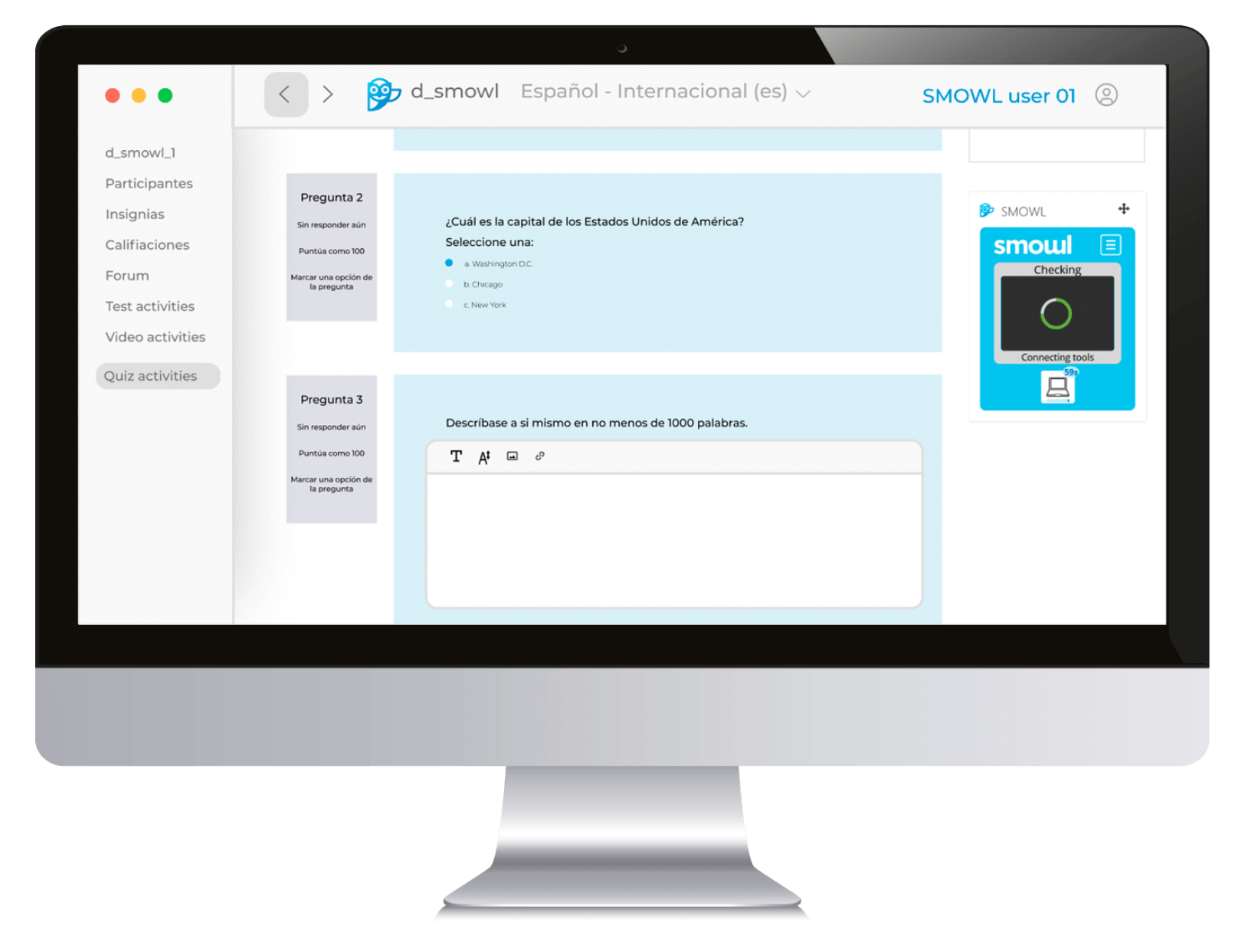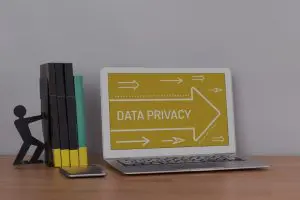Web accessibility ensures that everyone, including individuals with disabilities, can access, understand, and use the available web resources.
The idea is to eliminate barriers and create an inclusive environment, making it a crucial aspect of modern web design and development.
In this post, we will delve into the concepts of web accessibility and digital accessibility so you understand their importance in creating online courses and tools.

What is Web Accessibility?
As briefly mentioned before, web accessibility refers to the practice of making websites accessible to everyone, including individuals with disabilities.
Accessibility is important as it promotes equality and inclusion, besides complying with legal regulations in many regions. It also enhances user experience and can contribute to broader reach and brand recognition.
For this, digital platforms like web or virtual campuses must adhere to a set of basic principles listed below:
Perception
Users should be able to perceive the information presented, regardless of their abilities.
Operability
The site’s functionalities should be operable by everyone, even those with motor disabilities.
Understandability
The information and user interface operation should be understandable.
Robustness
The content must be robust enough to be reliably interpreted by a wide variety of user agents, including assistive technologies.
Subscribe today to SMOWL’s weekly newsletter!
Discover the latest trends in eLearning, technology, and innovation, alongside experts in assessment and talent management. Stay informed about industry updates and get the information you need.
Simply fill out the form and stay up-to-date with everything relevant in our field.
What is Digital Accessibility?
Digital accessibility (also known as e-accessibility) refers to the practice of building digitally accessible experiences for everyone, including those with sensory, motor, or cognitive disabilities.
It’s a concept very similar to web accessibility, but more generic, as it encompasses many more types of digital resources and tools.
Digital Accessibility tools
Currently, digital accessibility is fundamental to ensure that all users, including those with disabilities, can interact with and benefit from digital products.
To achieve this goal, various tools and technologies are designed to assist developers and designers in creating accessible digital experiences.
Some of these tools include:
- Accessibility checkers: Tools like WAVE or axe, allowing developers to verify their websites’ compliance with accessibility guidelines, identifying issues and suggesting solutions. Screen readers: Like NVDA or JAWS, transforming text into speech, enabling individuals with visual impairments to interact with digital content.
- Magnification technologies: Allowing users to enlarge text and images on the screen, facilitating visualization for individuals with visual impairments.
- Voice recognition software: Like Dragon NaturallySpeaking, allowing users to control computers and mobile devices through voice commands.
- Adaptive keyboards and alternative pointer devices: Providing alternative input methods for individuals with motor limitations.
Why is digital accessibility necessary?
Digital accessibility is crucial for several reasons, encompassing legal, ethical, and practical aspects:
Inclusivity and Equal Access:
Digital accessibility ensures that all individuals, regardless of their disabilities or impairments, have equal access to information and services available online. This encompasses individuals with visual, auditory, motor, or cognitive disabilities.
Legal Compliance:
Numerous countries have established laws and regulations mandating digital accessibility to prevent discrimination against individuals with disabilities. For instance, in the US, laws such as the Americans with Disabilities Act (ADA) and Section 508 of the Rehabilitation Act impose certain accessibility requirements on businesses and government agencies.

Broader Audience Reach:
By making digital platforms accessible, businesses and organizations can reach a wider audience. This includes not only individuals with disabilities but also the elderly and those with temporary impairments.
Improved Usability and User Experience:
Accessible design often leads to improved usability for everyone, not just those with disabilities. It encourages cleaner, more intuitive interfaces and better organized content.
SEO Benefits:
Accessibility measures, such as providing alt text for images and proper heading structure, often overlap with best practices for Search Engine Optimization (SEO), thus potentially improving a website’s ranking in search engine results.
Social Responsibility and Positive Brand Image:
Embracing digital accessibility reflects a commitment to social responsibility, which can enhance a company’s reputation and customer loyalty.
Innovation and Flexibility:
The challenges of creating accessible digital platforms can foster innovation and result in the development of more flexible and adaptable technologies.
Cost Efficiency in the Long-term:
Initially, accessible design might require additional investment, but in the long term, it can lead to cost savings through reduced legal risks, broader customer base, and easier maintenance.
Analytics and Insights:
By adhering to digital accessibility standards, organizations can gather more accurate data on user interactions, helping to inform better decision-making and continuous improvement of their digital platforms.
Digital accessibility is not merely a box to be ticked off; it’s an ongoing commitment to ensuring that digital content and services are usable by as broad a range of people as possible.
Digital accessibility in education
Digital accessibility in education focuses on ensuring that educational tools and resources are accessible to all students, regardless of their abilities or disabilities.
This form of accessibility aims to:
- Eliminate barriers: In learning by providing educational resources that are accessible to all students, including those with visual, auditory, motor, or cognitive disabilities.
- Promote inclusion: By allowing all students to fully participate in the educational process.
- Improve learning outcomes: By providing multiple means of representation, action, and expression, which can help all students reach their full potential.
Implementation in the classroom
Implementing accessibility in the classroom involves a series of strategies and technologies that allow educators to cater to a broader variety of learning needs.
Some of these strategies include:
- Use of assistive technology: Like screen readers, voice recognition software, and magnification technologies to assist students with disabilities in accessing content and participating in learning activities.
- Universal Design for Learning (UDL): An approach involving designing the learning environment and materials to be accessible to all students from the outset.
- Teacher training: In inclusive teaching strategies and the use of assistive technology to ensure they are prepared to address the diverse needs of students.
- Promoting collaboration: Among students, to support inclusive learning and foster an inclusive and supportive classroom environment.

Implementing these and other strategies can help create a more inclusive and effective learning environment, benefiting both students and educators.
An additional way to amplify accessibility in digital realms is the use of proctoring tools in the context of training and certifications.
Education stands as a crucial pillar to ensure that all individuals enjoy equitable access to the same platforms and opportunities.
In this direction, the proctoring plans of SMOWL represent a formidable solution to turn your selection processes, training, or certifications into much more accessible procedures.
We invite you to request a free demonstration so that you can explore first-hand the benefits of the leading proctoring service in the industry.
Download now!
8 interesting
facts
about proctoring
Discover everything you need about online proctoring in this book to know how to choose the best software.
Fill out the form and download the guide now.
And subscribe to the weekly SMOWL newsletter to get exclusive offers and promotions.
You will discover all the trends in eLearning, technology, innovation, and proctoring at the hands of evaluation and talent management experts.






